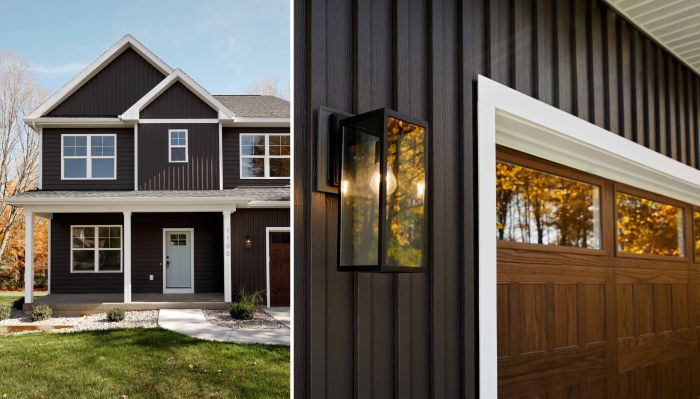Exploring the World of Interior Architecture
Interior architecture sets the stage for this enthralling narrative, offering readers a glimpse into a story that is rich in detail and brimming with originality. From defining its significance to delving into innovative design techniques, this exploration promises a captivating journey through the realm of interior architecture.
As we unravel the key elements, delve into sustainability practices, and examine cultural influences, the intricate tapestry of interior architecture unfolds before us, showcasing a blend of aesthetics and functionality that shapes our built environment.
Introduction to Interior Architecture
Interior architecture is a field that focuses on designing and creating interior spaces that are both functional and aesthetically pleasing. It involves designing the layout, structure, and organization of interior spaces, taking into consideration factors such as lighting, acoustics, and materials.
Interior architecture plays a crucial role in shaping the way we experience and interact with our built environment.The key difference between interior architecture and interior design lies in their scope and focus. While interior design primarily deals with the decoration and furnishing of spaces, interior architecture goes beyond that to address the structural elements of a space, such as walls, ceilings, and floors.
Interior architects work closely with architects and engineers to ensure that the interior spaces are not only visually appealing but also structurally sound and functional.
Examples of Famous Interior Architecture Projects
- The Guggenheim Museum in Bilbao, Spain: Designed by architect Frank Gehry, the Guggenheim Museum is a masterpiece of contemporary architecture that seamlessly integrates interior spaces with the building's iconic exterior.
- The Sydney Opera House in Australia: Designed by Danish architect Jørn Utzon, the Sydney Opera House is renowned for its innovative interior spaces that reflect the building's unique shell-like structure.
- The Louvre Pyramid in Paris, France: Designed by architect I.M. Pei, the Louvre Pyramid serves as the main entrance to the Louvre Museum and features a striking interior space that combines modern design with the historic surroundings.
Elements of Interior Architecture

Interior architecture encompasses various key elements that play a vital role in shaping the design and functionality of indoor spaces. These elements include spatial organization, lighting, materials, and color schemes.Spatial Organization:Spatial organization in interior architecture involves the arrangement and layout of spaces within a building.
It considers factors such as flow, circulation, and the relationship between different areas. Effective spatial organization can enhance usability and create a harmonious environment for occupants.Lighting:Lighting is a crucial element in interior architecture as it not only illuminates a space but also affects mood and ambiance.
Different lighting techniques, such as natural light, artificial light, and accent lighting, can be used to highlight architectural features, create focal points, and enhance the overall design.Materials:Materials play a significant role in interior architecture, influencing the aesthetics, durability, and functionality of a space.
Innovative use of materials, such as reclaimed wood, recycled glass, and sustainable fabrics, can add character and uniqueness to interior designs while promoting sustainability and eco-friendliness.Color Schemes:Color schemes are essential in setting the tone and atmosphere of a space. They can evoke emotions, create visual interest, and define the style of a design.
Interior architects carefully select color palettes to achieve the desired effect and enhance the overall design concept.Integration with Structural Elements:Interior architecture seamlessly integrates with the structural elements of a building, such as walls, floors, and ceilings. By considering the existing structure and architectural features, interior architects can enhance the functionality and aesthetics of indoor spaces while maintaining structural integrity.Innovative Use of Materials:Innovative use of materials in interior architecture can result in unique and visually striking designs.
For example, incorporating materials like glass, metal mesh, or concrete can create modern and industrial-inspired interiors. Additionally, combining contrasting materials or textures can add depth and complexity to a space, making it more engaging and dynamic.
Importance of Functionality
Functionality plays a crucial role in interior architecture as it focuses on creating spaces that not only look visually appealing but also serve a purpose. It involves designing interiors that are practical, efficient, and comfortable for the occupants.
Role of Functionality in Interior Architecture
Functionality in interior architecture influences design decisions in various ways. For example, when planning the layout of a space, designers need to consider how people will move through the area and ensure that there is adequate circulation. This might involve placing furniture strategically to allow for easy navigation and accessibility.
Examples of Functionality in Design Decisions
- Choosing durable and easy-to-maintain materials for high-traffic areas to ensure longevity and practicality.
- Integrating storage solutions into the design to maximize space and reduce clutter.
- Considering natural lighting and ventilation to enhance the comfort and well-being of the occupants.
Balancing Aesthetics with Functionality
Finding the balance between aesthetics and functionality is essential in interior architecture. While it's important for a space to look visually appealing, it should also be designed with the needs and activities of the users in mind. This could involve prioritizing certain design elements over others or making compromises to ensure that the space is both beautiful and functional.
Sustainable Practices in Interior Architecture

When it comes to interior architecture, sustainability plays a crucial role in creating spaces that are environmentally friendly, socially responsible, and economically viable. By incorporating sustainable practices, interior architects can contribute to a healthier planet and enhance the well-being of occupants.
Importance of Sustainability
Sustainability in interior architecture is essential to reduce the environmental impact of buildings, conserve natural resources, and create healthier indoor environments. By using eco-friendly materials and design techniques, interior architects can minimize waste, improve energy efficiency, and promote renewable resources.
Eco-Friendly Materials and Design Techniques
- Utilization of recycled materials: Incorporating materials such as reclaimed wood, recycled glass, and repurposed metal can reduce the demand for new resources and divert waste from landfills.
- Energy-efficient lighting and appliances: Installing LED lighting, energy-efficient appliances, and smart controls can help minimize energy consumption and lower utility costs.
- Natural ventilation and daylighting: Designing spaces to maximize natural light and airflow can reduce the need for artificial lighting and heating, enhancing both energy efficiency and occupant comfort.
Examples of Sustainable Interior Architecture Projects
One notable example of sustainable interior architecture is the Bullitt Center in Seattle, Washington. This commercial building is designed to be a net-zero energy and water facility, featuring solar panels, rainwater harvesting systems, and natural ventilation to minimize its environmental footprint.
Cultural Influences on Interior Architecture
Cultural influences play a significant role in shaping interior architecture, as different cultures bring their unique styles, materials, and traditions into the design process.
Historical Architecture Impact on Modern Interior Design
Historical architecture serves as a rich source of inspiration for modern interior design, with elements such as arches, columns, and intricate patterns being reinterpreted in contemporary spaces.
Examples of Cultural Elements in Interior Architecture
Various cultures around the world have influenced interior architecture, like the use of vibrant colors in Moroccan design, the minimalism of Japanese interiors, or the intricate wood carvings in Balinese architecture.
Technology and Interior Architecture
Technology plays a significant role in shaping the field of interior architecture, revolutionizing the way spaces are designed and experienced. From virtual reality to 3D modeling, advancements in technology have opened up new possibilities for interior designers to create innovative and functional spaces.
Virtual Reality and 3D Modeling
Virtual reality and 3D modeling have become essential tools in the interior architecture design process. Designers can now create realistic virtual environments that allow clients to experience a space before it is even built. This immersive technology enables designers to make informed decisions about layout, materials, and lighting, resulting in more efficient and effective design solutions.Examples of cutting-edge technologies used in interior architecture projects include:
- Virtual reality walkthroughs that allow clients to explore a space in real-time.
- Augmented reality applications that overlay digital designs onto physical spaces.
- Parametric modeling software that generates complex geometries and patterns.
- Building Information Modeling (BIM) software for collaborative design and construction management.
Final Review
As we conclude our exploration of interior architecture, we are left with a profound appreciation for the artistry and ingenuity that define this discipline. From sustainable practices to technological advancements, the dynamic interplay between culture and design continues to inspire the evolution of interior architecture in exciting new directions.
General Inquiries
What is the difference between interior architecture and interior design?
Interior architecture focuses on the structural elements and spatial organization of a space, while interior design deals more with the aesthetics and decorative aspects.
How does functionality influence design decisions in interior architecture?
Functionality plays a crucial role in interior architecture by ensuring that the design not only looks good but also serves its intended purpose effectively.
Why is sustainability important in interior architecture?
Sustainability is vital in interior architecture to minimize environmental impact, promote healthy living spaces, and conserve resources for future generations.




